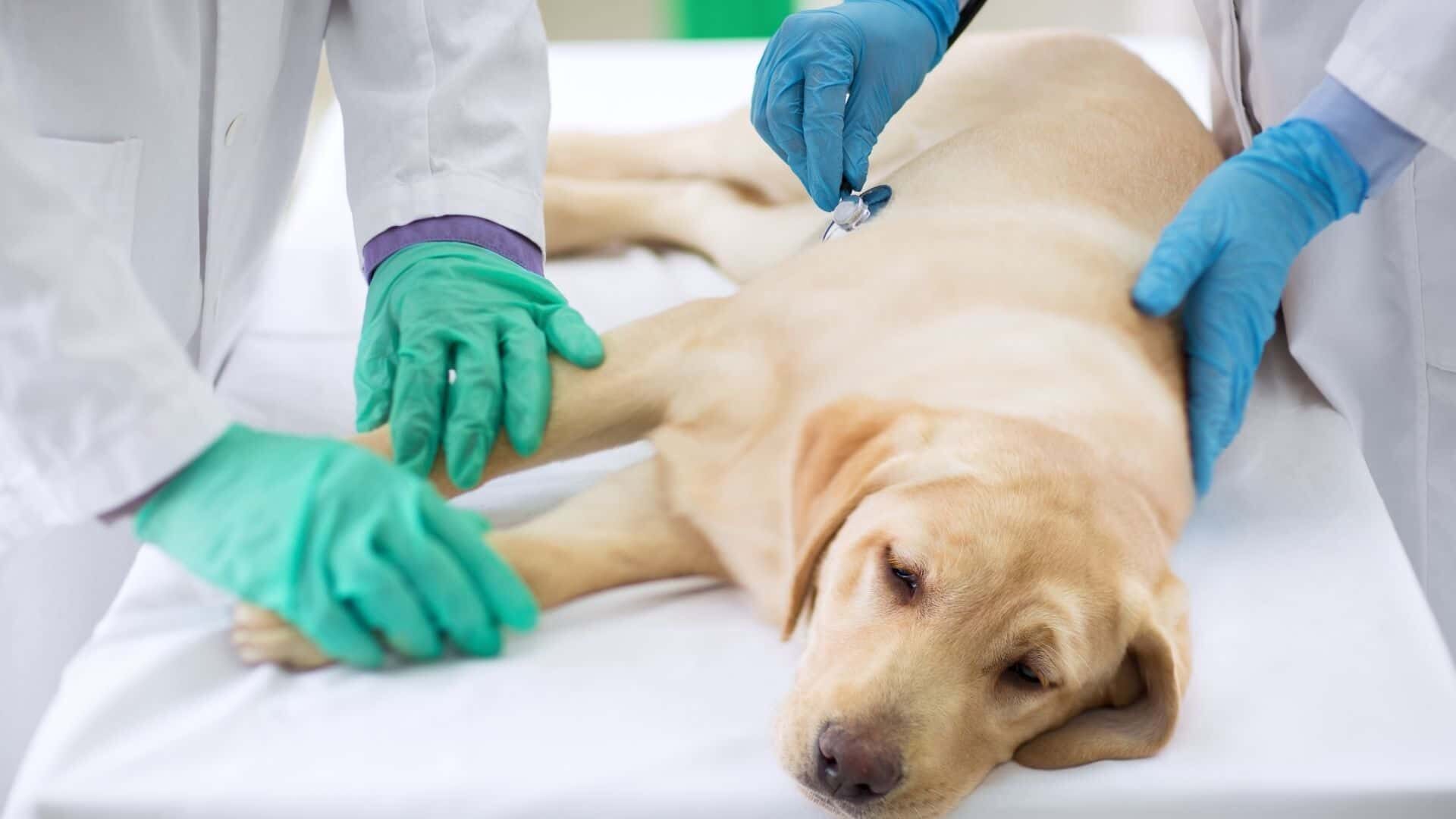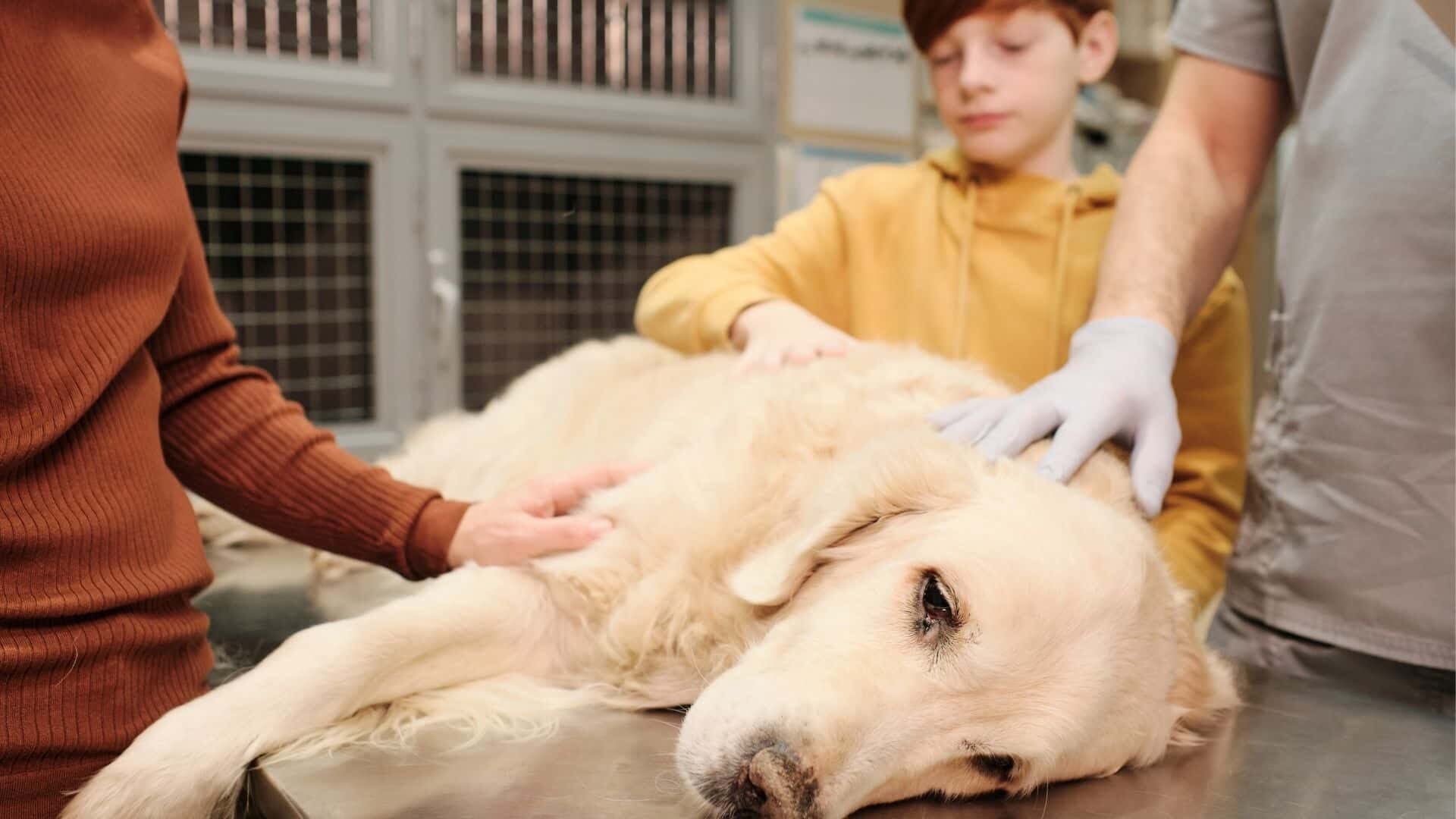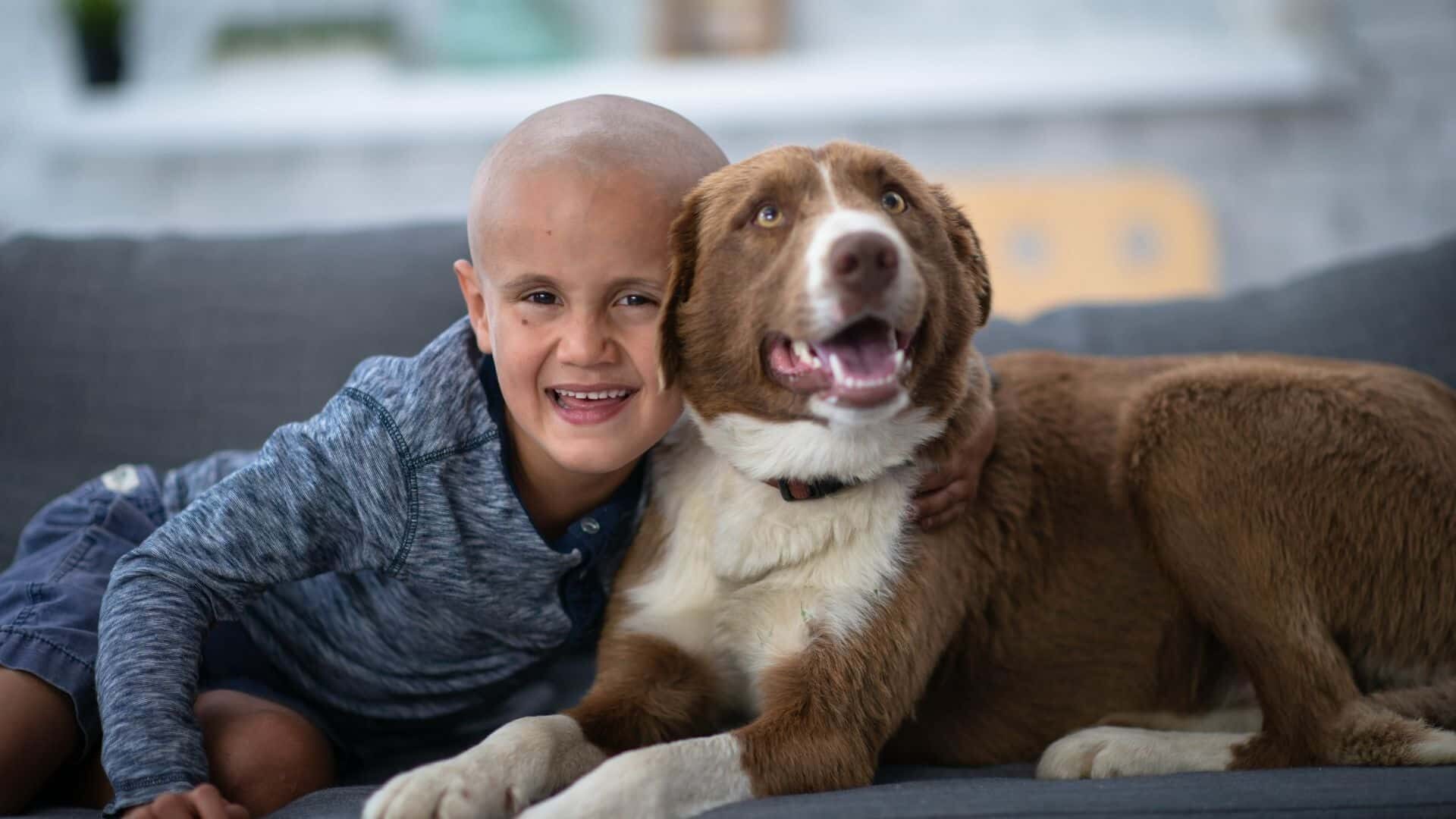Dogs are cherished members of our families, and we worry about their well-being just as much as we do about the well-being of our children and significant others. A cancer diagnosis is one of dog owners’ most dreaded medical nightmares, and the statistics back up their fears.
Approximately 6 million dogs are diagnosed with cancer each year according to the AAHA and the National Cancer Institute. According to the Veterinary Cancer Society, nearly half of all dogs over the age of 10 will be diagnosed with cancer at some point.
Even though we know that a cancer diagnosis is devastating, we also know that half of canine cancers are curable if caught early enough, and that treatment options are constantly evolving. As a dog owner, it is important to know the symptoms of common canine cancers.
What are the different types of cancer in dogs?

Our dogs are some of the most devoted members of our family. It’s heartbreaking to think that your beloved dog could be diagnosed with a life-threatening disease like cancer.
Everyone dreads the thought of their dog becoming seriously ill, and no one wants to think about it. However, one of the best ways to help your dog receive treatment while the disease is still in its early stages is to become familiar with the signs and symptoms of cancer in dogs and be on the lookout for any symptoms.
Canine cancer is as common as human cancer, which may come as a shock to you. Similar symptoms may be present in them as well.
There are different types of cancer in dogs:
1. Lymphoma/Lymphosarcoma
Canine lymphoma, which is a common form of cancer, is divided into more than 30 distinct subtypes. There are many different types of lymphomas, and vets use the term “lymphoma” to refer to them all.
Immune defenses are bolstered as a result of their consumption. Lymphoma that affects the digestive system, as well as the lymph nodes outside the nodes, is the most common type in dogs.
2. Melanoma
melanoma, which is prone to spreading to other parts of the dog’s body, can cause skin tumors. It has a tendency to be cancerous. A dog’s mouth or feet are common locations where these tumors are discovered by veterinarians.
3. Mast Cell Cancer
Depending on the location, mast cell tumors can be difficult to remove from a dog’s skin. This canine cancer can be successfully treated if detected early and removed completely.
4. Fibrosarcoma
The treatment of dogs with this slow-progressing form of cancer can be difficult. To prevent fibrosarcoma from returning, radiation and amputation are commonly used in dogs.
5. Hemangiosarcoma
This extremely dangerous form of cancer necessitates immediate medical attention, otherwise it could prove fatal very quickly. In dogs, hemangiosarcoma tumors can grow to enormous sizes. Spleen cancer is common, but can spread to other organs, including the heart and lungs of dogs, through blood vessels.
6. Bone cancer
Bone cancer in dogs is the most common type. Large breed dogs are most commonly affected by osteosarcoma, which can develop in any breed.
It’s difficult to tell if your dog has cancer just by looking at him. In fact, even in dogs, blood tests may fail to reveal the presence of certain cancers. However, you can keep an eye out for a few telltale signs that your dog may be suffering from cancer.
What to know about cancer in dogs?
Cancerous growths under a dog’s skin and fur are the most common appearance of canine tumors. Some tumors will not be visible to the naked eye. Tumors can be visible or hidden deep within the dog’s body, depending on the breed. Early detection and treatment are critical to preserving your dog’s health and quality of life. Because of this, it is important to check your dog on a regular basis for any abnormal lumps and make an appointment with a veterinarian if necessary.
While petting or bathing their dog, pet owners are most likely to discover a tumor. If you feel a lump while touching your dog’s body, make an appointment with your veterinarian right away. If the tumor is large enough, a needle aspiration is likely to be performed to obtain tumor cells for a diagnosis. In determining what type of surgery and/or follow-up cancer care may be required, the diagnosis is helpful.
While your veterinarian may not be able to see tumors on dogs, he or she may be able to palpate them (feel them with their hands). The enlarged spleen, for example, may be palpable to your veterinarian but invisible to you. Using the list of canine cancer symptoms above, you can learn more about what to look out for in your pet.
What are the top signs that your dog has cancer?

1. Your pet’s skin is covered in bumps and lumps
Your dog’s skin can be checked for lumps and bumps by gently rubbing your hands across it. Sadly, you can’t tell by feeling whether or not a lump is cancerous, so it’s always best to have a veterinarian check it out.
It’s a good idea to teach your dog to look at its feet, as lumps can form anywhere on the body, including between the toes.
2. Odors from the mouth, ears or other parts of your dog’s body that are out-of-the-ordinary
Your dog’s mouth or ears may be giving off an unusual smell if they’re showing signs of cancer. They could be suffering from an ear infection or a dental problem. Having a bad smell in the mouth can be a sign of a tumor.
3. Swellings that do not go away or grow in size
The most obvious sign is a growing mass under the skin (also known as a bump or lump). Any surgeon will tell you to have it removed and biopsied rather than just “watch it.” It will be wonderful if the mass turns out to be benign. Once we know if it is malignant or cancerous, we can discuss the next steps.
4. Wounds that don’t get better.
In most cases, the sores are skin wounds that don’t appear to heal despite the use of antibiotics by mouth or an ointment applied to the affected area. No-healing wounds near a nail are also covered by this rule.
5. A reduction in body weight
This refers to a loss of weight that cannot be attributed to a diet. In Missy’s case, a tumor on the intestine could be a common cause.
6. The inability to eat
If your dog has a mass in its intestines, it may make him feel unwell. When this happens, a pet’s first reaction is to stop eating.
7. Inability to consume or swallow
Esophageal compression can be caused by an abnormal growth in the neck area (the tube between the mouth and the stomach).
8. Coughing or difficult breathing
If your dog has had a persistent cough for longer than a couple of days, or has started to display breathing difficulties, this can indicate more serious health issues that need to be investigated.
Dogs don’t really get colds and coughs like humans, so this could be a sign of cancer in dogs.
9. Increased drinking or frequency of urinating
Increased drinking or urinating can be a warning sign for certain types of cancer in dogs, as well as other metabolic illnesses.
If your dog has started to go outside multiple times in an evening, it’s time to get this checked.
10. Bleeding or discharge from anybody opening
Although bleeding from the nose does not necessarily mean cancer, is certainly a common sign of cancer of the nose
11. Evidence of pain
Some cancers, in particular bone cancer, show themselves through your dog presenting signs of pain or discomfort such as limping and lameness.
If your dog is showing reluctance to do physical acts that were previously, it’s time for a check up – arthritis is also common in older dogs, and there are ways we can make them more comfortable.
12. The level of energy decreases
If your dog seems sluggish and uninterested in its usual pastimes, you should take notice and take your pet to the vet right away.
There are many diseases that can be diagnosed and treated in older pets, including heart disease and cancer, which can cause a decrease in energy levels.
13. Stiffness or lameness that does not go away
Every day, we see pets who aren’t themselves, but fortunately, cancer isn’t one of their common ailments. Bone cancer, on the other hand, can cause pain and lameness, as well as leg swelling.
How to Detect Cancer in Dogs?
Canine cancer can only be accurately diagnosed by a veterinarian. This is why it’s so important to have your dog’s health checked out on a regular basis. Your dog’s veterinarian can look for early warning signs of cancer in dogs during these routine checkups. The key to a full recovery from canine cancer is to begin treatment as soon as possible.
What are the possible cancer treatment options for dogs?

Treatment decisions for dogs with cancer take into account many factors, including:
- The canine’s age
- Dog’s overall health and well-being
- Type of cancer
- The tumor’s biological behavior
- Cancer Diagnosis Stage
Therapy options for dogs with cancer are heavily influenced by the patient’s overall health. The patient’s ability to tolerate cancer treatment is part of this evaluation. If a dog has a slow-growing tumor and is over the age of 10, the risks of treatment may outweigh any potential benefits.
There are a number of treatments for cancer in dogs that are similar to those used in humans.
- Chemotherapy
- Surgery
- X-ray treatment
- Herbal therapy is one form of holistic treatment.
There is a lack of agreement as to whether or not multiple treatment options can be combined to achieve the best results. In some cases, combining treatments for dogs with cancer can be beneficial, but this may not always be the case, as some treatments may interfere with each other and cause unintended harm. The next time you see your veterinarian, be sure to bring up these concerns.
What to do when cancer is diagnosed in your dog?
If you suspect that your dog has cancer, the following are the most likely next steps:
It is a part of cytology to remove cells from a sample in order to examine them under a microscope. This is a quick and easy way to learn about the tumor’s condition, including whether it’s benign or malignant. Most pets don’t require any sedation for this procedure.
An x-ray is required to see inside the organs to check for fluid or mass buildup.
Organ function and cell count can be determined by conducting laboratory tests.
Taking a tissue sample and examining it under a microscope is known as a biopsy. To confirm a cancer diagnosis, this step is required. Most pets need to be sedated or under general anesthesia for biopsies to be performed safely.
If and how far the cancer has spread, additional cytology or biopsies of other tissues, such as lymph nodes, will be performed The tumor’s exact location and the most effective treatment may also be determined using more advanced imaging techniques such as a CT scan, MRI, or PET scan.
Watch 8 types of tumors (cancer) in dogs and affected breeds | Video
What types of cancer are most common in dogs, and how common are they?
A: It’s becoming more and more common, particularly in older dogs. Cancer occurs in 50% of all dogs over the age of ten. Lymph node tumors, such as malignant lymphoma, are common.
Mast cell tumors are a type of skin cancer that we see. Breast cancer and soft tissue sarcomas are two different types of tumors. Bone cancer is a common problem in dogs, as well.
When does cancer in a dog reach its terminal stage?
Difficulty catching one’s breath, shallow breaths, or wide and deep ones that appear labored are all signs of labored breathing. Lethargy and a lack of desire to eat.
Urinating and excreting, but not being able to get away from the mess because you’re too weak to do so. Anxiety and inability to fall asleep.
How long can a dog with cancer typically live?
It all depends on the aggressiveness of the cancer. Some dogs may only live a few weeks or months after they’ve been diagnosed, while others may live for several years. Patients with lymphoma, for example, can expect to live for many years.
Is a dog in pain because of cancer?
If your dog exhibits any behavior that is out of the ordinary, it could be a sign that they are in pain. In dogs, the following are some of the most common signs of discomfort: Limping. Inability to eat.
Is it possible for dogs to show signs of death?
Your dog will no longer appear tense, but rather will “let go,” which is the most obvious sign of this technique’s success. As their lungs empty for the final time, you’ll notice a slimming effect on their body and, if their eyes are still open, a lack of life in their pupils.
Final thoughts

If you suspect cancer in your dog, please contact us to set up an appointment, regardless of whether you find a bump or observe behavioral symptoms. You and your dog will receive compassionate, comprehensive cancer care and support from our veterinarians and staff.
Even though dealing with canine cancer may seem overwhelming, you are not alone. Our goal is to provide your dog with the best possible veterinary care in order to alleviate their suffering and eradicate the cancer.





